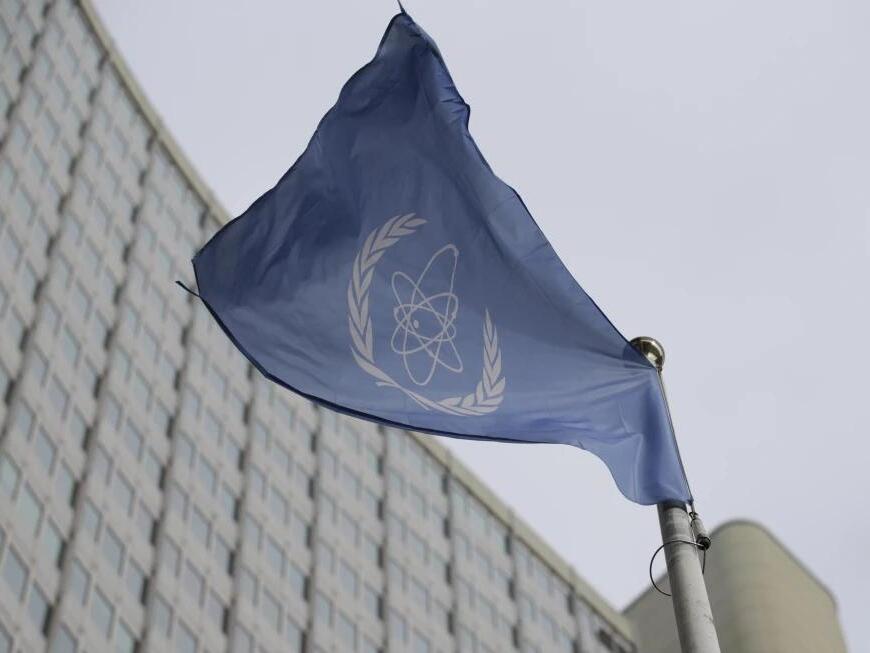Physical Address
304 North Cardinal St.
Dorchester Center, MA 02124
Physical Address
304 North Cardinal St.
Dorchester Center, MA 02124

Iran has significantly increased its stockpile of uranium enriched to nearly weapons-grade levels, according to a confidential report from the International Atomic Energy Agency (IAEA) released on Thursday. This increase occurs despite ongoing international calls for Iran to comply with nuclear monitoring requirements.
The IAEA’s report, reviewed by The Associated Press, reveals that as of August 17, Iran holds 164.7 kilograms (about 363.1 pounds) of uranium enriched to 60%. This figure reflects an increase of 22.6 kilograms (approximately 49.8 pounds) since the agency’s previous report in May.
Uranium enriched to 60% purity is a critical step towards achieving weapons-grade levels of 90%. The IAEA has indicated that as little as 42 kilograms (92.5 pounds) of this enriched uranium could potentially be further processed to produce one atomic bomb.
The IAEA Director General, Rafael Mariano Grossi, has cautioned that Iran possesses enough uranium enriched to near-weapons-grade levels to potentially create “several” nuclear bombs. He has also expressed that the agency cannot guarantee whether any of Iran’s centrifuges have been diverted for illicit enrichment activities.
This latest report comes during a period of heightened tensions between Tehran and the IAEA, following a June resolution from the 35-member IAEA Board of Governors. That resolution condemned Iran for its lack of cooperation with the agency based in Vienna.
In 2015, a historic nuclear agreement with world powers limited Iran’s nuclear program—a point of contention given the West’s concerns regarding the potential for weapon production. Iran insists its nuclear efforts are solely for peaceful purposes. However, the agreement unraveled after the United States withdrew from it in 2018, prompting Iran to abandon the restrictions imposed by the deal and enrich uranium up to 60% purity.
Furthermore, the IAEA has reported that surveillance measures have been disrupted and that Iran has restricted access to some of its most qualified inspectors. Iranian officials have increasingly hinted that the nation may consider developing nuclear weapons.
The report indicates that Iran has not reversed its decision from September to block IAEA inspectors from monitoring its nuclear activities, and that the surveillance cameras installed by the agency remain out of service.
The IAEA attempted to gain access to a centrifuge manufacturing facility in Isfahan to service its equipment but received no response to its communication dated August 8.
The report also highlights Iran’s failure to address the IAEA’s ongoing investigation regarding the origins and current location of man-made uranium particles discovered at two undeclared sites, Varamin and Turquzabad.
Shortly before the report was released, Iran’s supreme leader suggested the possibility of renewed discussions with the United States regarding Iran’s advancing nuclear program, indicating that there is “no harm” in negotiating with the “enemy.” However, Ayatollah Ali Khamenei emphasized strict boundaries for any dialogue between the nations, cautioning against trusting Washington.
Iran’s total stockpile of enriched uranium is reported to stand at 5,751.8 kilograms (12,681 pounds) as of August 17. The IAEA noted that Iran’s continuous production of highly enriched uranium raises further concerns for the agency.
The report also acknowledged that the IAEA was informed before the June elections in Iran that any further dialogue would depend on the stance of the new government. In response to the election of President Masoud Pezeshkian, the IAEA extended an offer to send its chief to Tehran to revive dialogue. However, there has been no progress in this area since.
Additionally, the IAEA confirmed that Iran has installed eight cascades of IR-6 centrifuges at its underground facility in Fordo, although these enhancements are not currently operational. Meanwhile, the installation of IR-2m centrifuges continues at the Natanz site, where Iran has already added six more operational cascades.
Under the original terms of the 2015 agreement, Iran was permitted to install only first-generation centrifuges. The more advanced centrifuges that Iran is now deploying can enrich uranium significantly faster than those permitted under the original terms.
The implications of the IAEA’s findings are likely to escalate existing tensions in the broader Middle East context. Relations between Iran and Israel have become increasingly strained, especially following the outbreak of the Israel-Hamas conflict in early October.
Recent military actions have seen Iran conduct missile and drone strikes against Israel, marking a significant escalation in hostilities. This spike in tensions follows the assassination of Hamas leader Ismail Haniyeh in Tehran, leading Iran to issue warnings of potential retaliation against Israel.
Source: AP News



